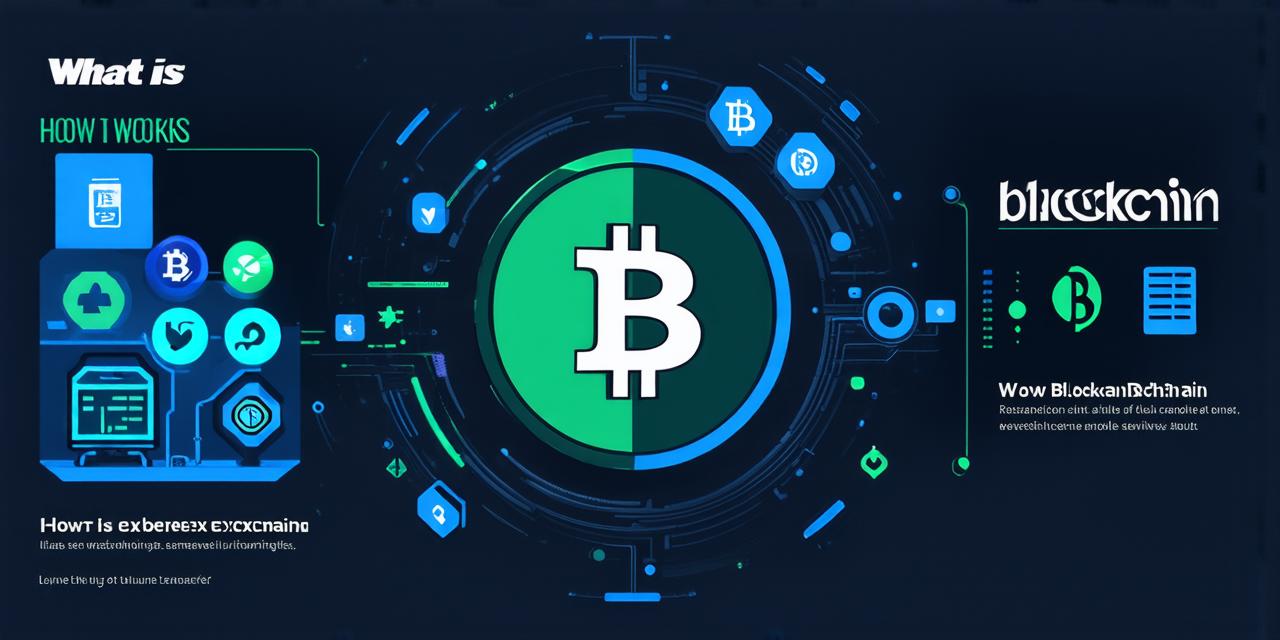
Blockchain technology is a revolutionary innovation that has taken the world by storm. It is a decentralized digital ledger that records transactions across many computers in a secure and transparent manner. In this article, we will explore the basics of blockchain technology and how it works.
What is Blockchain?
Blockchain is a distributed database that maintains a continuously growing list of records, called blocks, which are linked using cryptography. Each block contains a cryptographic hash of the previous block, a timestamp, and transaction data. This creates an unalterable chain of blocks that cannot be tampered with or hacked.
The concept of blockchain was first introduced in 2008 by an unknown person or group under the pseudonym Satoshi Nakamoto. They proposed a decentralized digital currency called Bitcoin, which would be based on blockchain technology. Since then, blockchain has been used for various applications, including smart contracts, supply chain management, and even voting systems.
How does Blockchain work?
Blockchain works through a consensus mechanism, where multiple nodes (computers) in the network agree on the validity of transactions. This ensures that the ledger is not tampered with or manipulated by any single entity.
Each block contains several pieces of information, including:
- A cryptographic hash of the previous block: This creates a unique identifier for each block and ensures that it cannot be altered without changing the entire chain.
- A timestamp: This records the time when the block was added to the ledger.
- Transaction data: This includes information about the transactions that occurred during the period between the two blocks.
When a new transaction is added to the network, it is broadcast to all nodes in the network. The nodes then verify the transaction and add it to their local copy of the ledger. Once a certain number of nodes have verified the transaction (usually a majority), it is added to the blockchain.
Benefits of Blockchain
Blockchain technology offers several benefits that make it an attractive option for various applications. These include:
- Decentralization: The blockchain network is decentralized, meaning that there is no central authority controlling it. This eliminates the need for intermediaries and reduces the risk of fraud or hacking.
- Security: Blockchain technology uses cryptography to secure transactions and prevent unauthorized access. Each block contains a unique identifier that ensures that it cannot be altered without changing the entire chain.
- Transparency: All transactions on the blockchain are visible to everyone on the network, ensuring that there is no hidden or secret activity.
- Immutability: Once a transaction is added to the blockchain, it cannot be altered or deleted. This ensures that the ledger is accurate and trustworthy.
- Speed: Blockchain technology allows for faster and more efficient transactions than traditional methods, such as bank transfers or credit card payments.
Case Studies of Blockchain in Action
Blockchain technology has been applied in various industries and use cases. Here are a few examples:
- Bitcoin: The most well-known example of blockchain technology is Bitcoin, a decentralized digital currency that allows for peer-to-peer transactions without the need for intermediaries such as banks or credit card companies.
- Smart Contracts: Blockchain technology has also been used to create smart contracts, self-executing contracts that automatically enforce their terms. These have been used in various industries, including finance and supply chain management.
- Supply Chain Management: Blockchain technology has been used to improve supply chain management by creating a transparent and secure ledger of product movements. This can help prevent fraud, reduce waste, and improve efficiency.
- Voting Systems: Blockchain technology has been proposed as a solution for creating secure and transparent voting systems. By using blockchain, votes can be recorded in a tamper-proof manner, ensuring that the results are accurate and trustworthy.
FAQs
1. What is blockchain?
Blockchain is a decentralized digital ledger that records transactions across many computers in a secure and transparent manner.
2. How does blockchain work?
Blockchain works through a consensus mechanism, where multiple nodes (computers) in the network agree on the validity of transactions.
3. What are the benefits of blockchain?
Blockchain technology offers several benefits that make it an attractive option for various applications, including decentralization, security, transparency, immutability, and speed.
